Will Artificial Intelligence, Blockchain, Quantum Computing, and Virtual Reality Redefine the Nature of Government Financial Management?
Doug Hadden, EVP Strategy and Innovation
Lively discussions about technology standards for government financial management information systems (FMIS) emerged last week as part of a panel session hosted by the Overseas Development Institute (ODI). The event, titled The Technology Architecture for the Future of Public Finance, generated frank points of view from across the panel members. It took place under Chatham House Rules, but here are my takeaways.
International FMIS standards, built on international public financial management (PFM) standards could:
- accelerate FMIS acquisitions
- ensure consistent compliance, control, and reporting from commercial and custom solutions
- improve FMIS success rates
- enable future PFM reform without replacing systems.
Will the Pace of Technology Innovation make FMIS Obsolete?
In short: no.
My point of view: Any deficiencies in FMIS come from the misalignment of PFM business and PFM technology architectures. This is important because architectures need to align. So where do new technologies fit in?
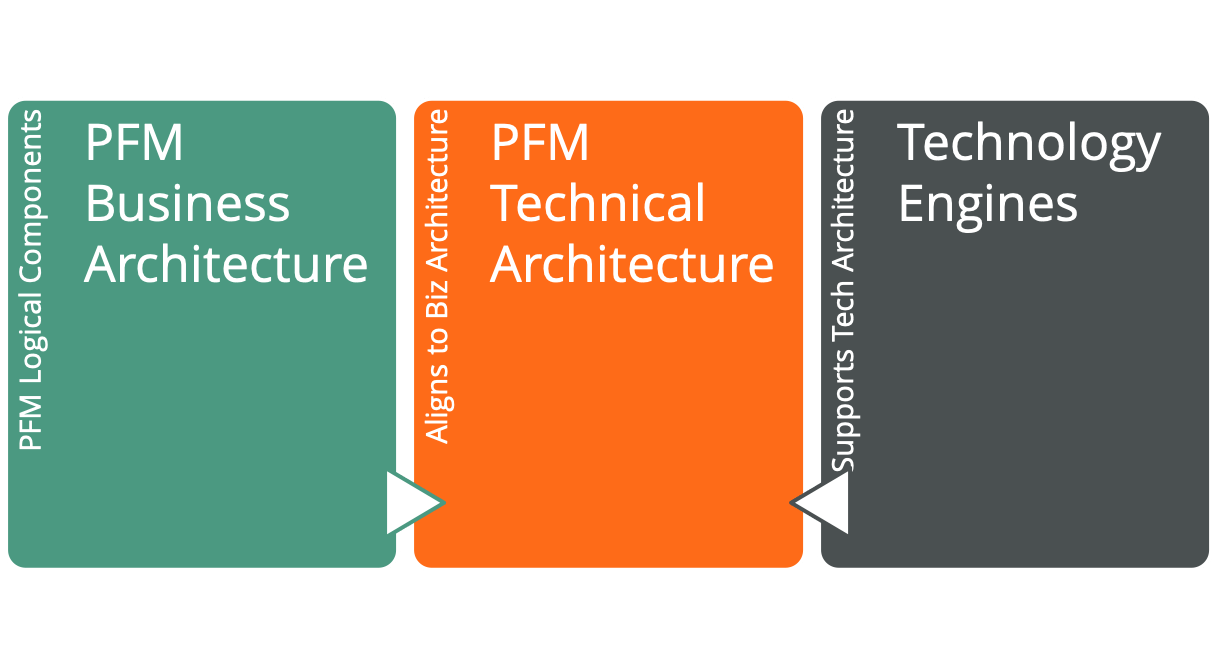
Technical architectures should be defined by business architectures. Technology which support technical architectures can then be considered like a set of engines that can be updated and replaced in response to innovation.
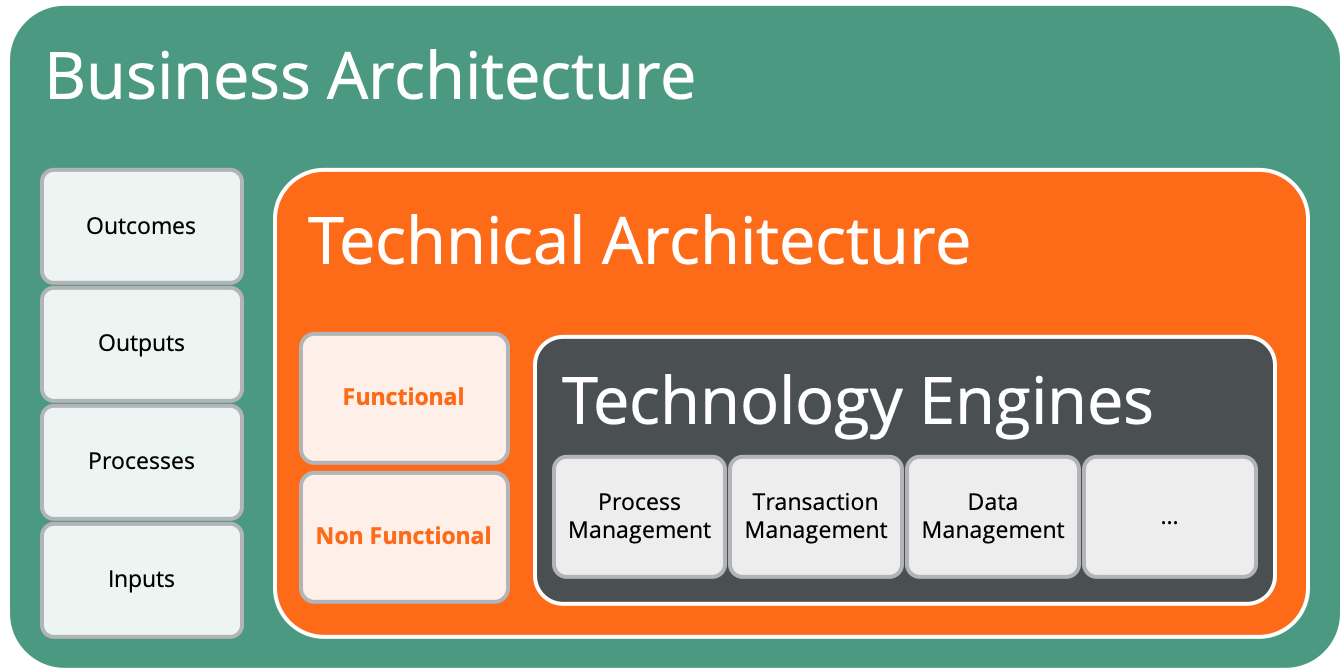
National development and sectoral strategies define a PFM business architecture:
- Outcomes are defined by government goals
- Outputs of activities should lead to outcomes
- Processes are aligned with organizational structures and priorities funded by budgets
- Inputs are generated by budgeted resources.
The technical architecture to support PFM is expressed as:
- Functional needs can be thought of as “jobs which need to be done”. These could be supported by manual to advanced systems such as budget preparation, commitment accounting, purchasing, payroll and payments
- Non-Functional needs for successful operations. These are often called the “abilities” like adaptability, compatibility, maintainability, scalability, and usability (with a few that aren’t “abilities”, like performance).
One or more technology engines can be leveraged to meet functional and non-functional requirements. And, changing requirements. These engines can be classified by underlying purpose. For example, artificial intelligence (AI) engines could support rule and process management. More advanced “performance management” functions possible with AI, without changing the nature of FMIS, are:
- Fraud detection
- Computer-aided audit
- Insight reporting and dashboards
- Civil servant talent management
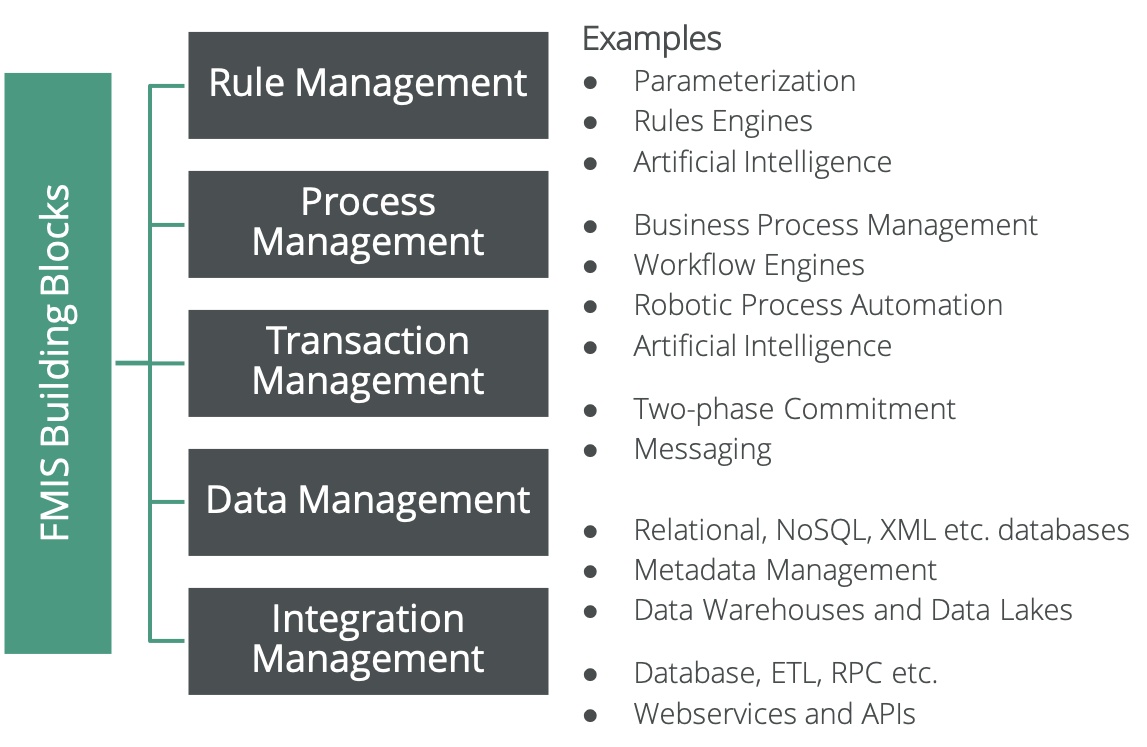
How Can We Create National and International FMIS Standards?
Lesson Learned: Our work in 2008 to create the FreeBalance Public Financial Management Component Map (PFMCM) shows that standardization is possible. And, we were able to use PFM standards to develop this PFM technical architecture alignment.
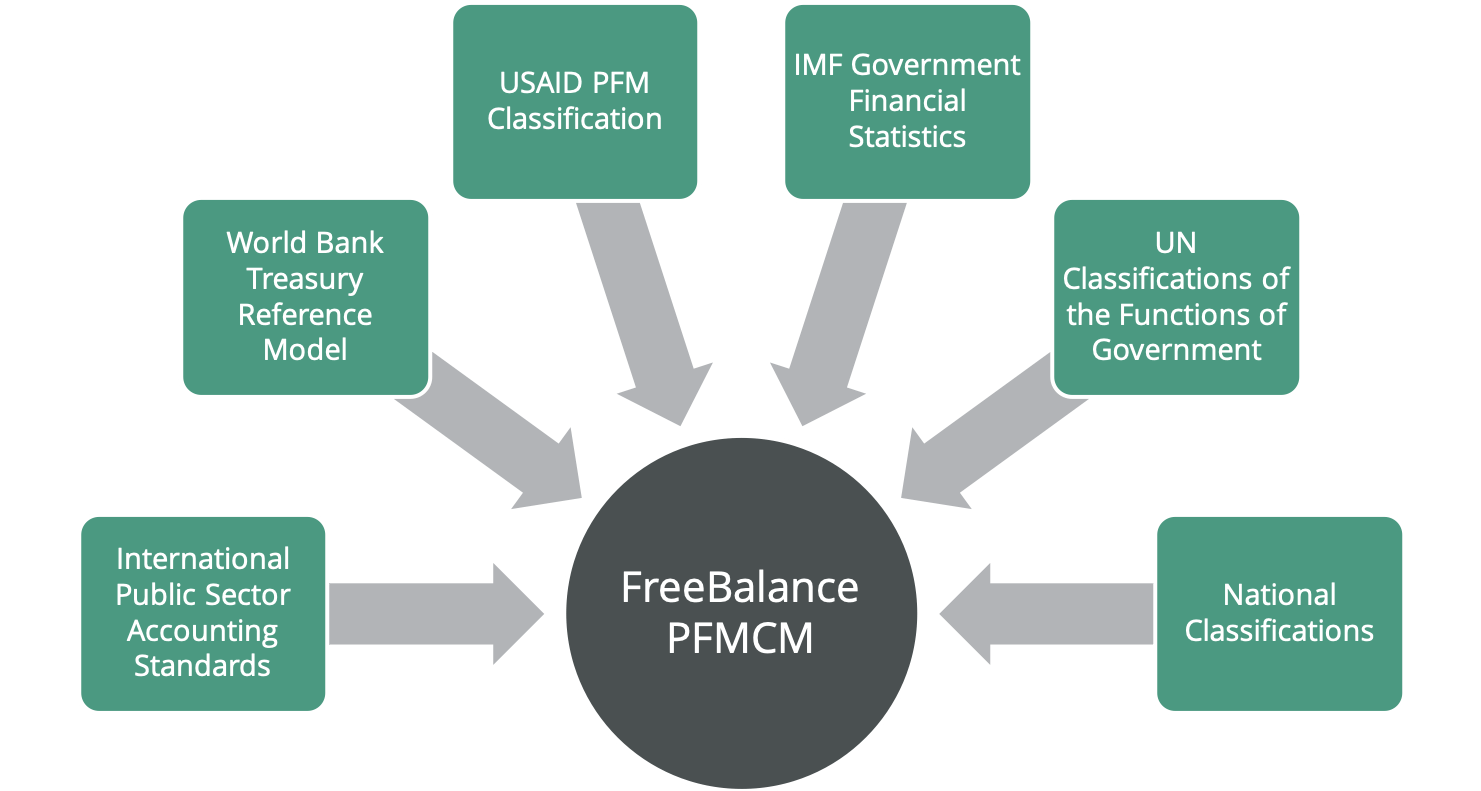
The PFMCM consists of:
- 6 PFM pillars with
- 24 functional groups consisting of
- 188 functional components supported by
- over 2,500 reusable business components in the FreeBalance Accountability Suite that we call “government entities“
Important takeaway: PFMCM pillars, functional groups, and functional components have nothing to do with technology or functional requirements. In fact, the PFMCM covers a slightly larger footprint than our products. We use it as a product roadmap.
Functional groups roughly equate with how commercial vendors define modules, as shown below:
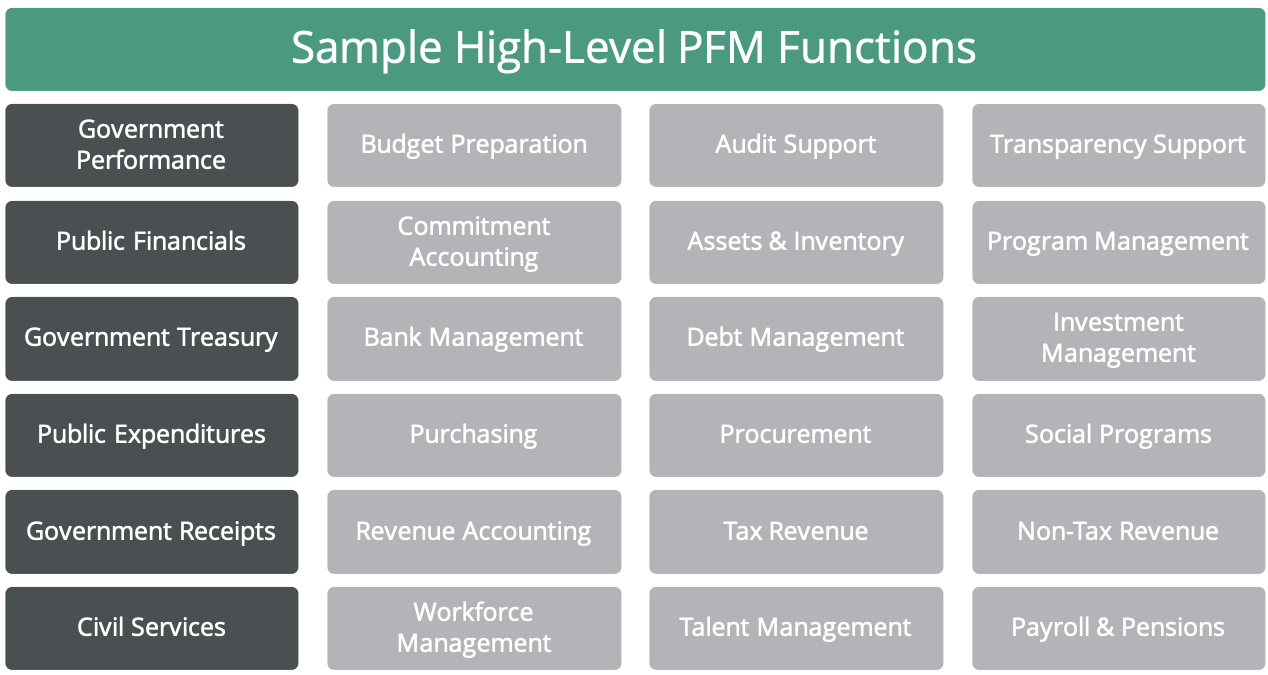
Bottom line: an architectural viewpoint supports FMIS standardization – emerging technologies improve functional and non-functional utility today, and in the future.
What about PFM Digital Transformation?
Another point of view: digital PFM transformation disrupts traditional thinking and established organizational structures and processes
Reality: this is not novel – any new FMIS disrupts organizational structures and processes
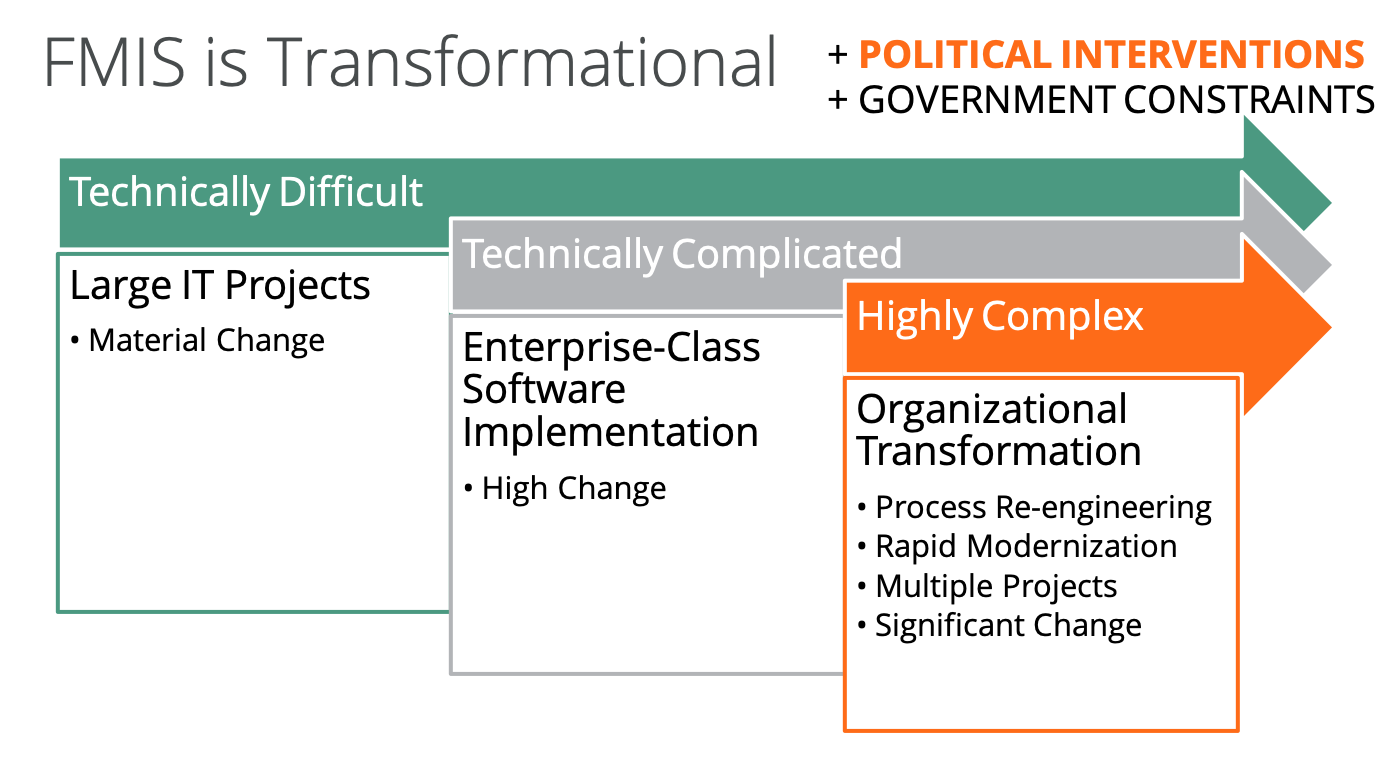
Digital transformation is first about organizational transformation using technology to rethink processes. An effective FMIS acts as a core system of record to support digital systems of engagement, intelligence, and innovation. The key is to have an open FMIS to support transformation and the use of emerging technologies to improve government outcomes.
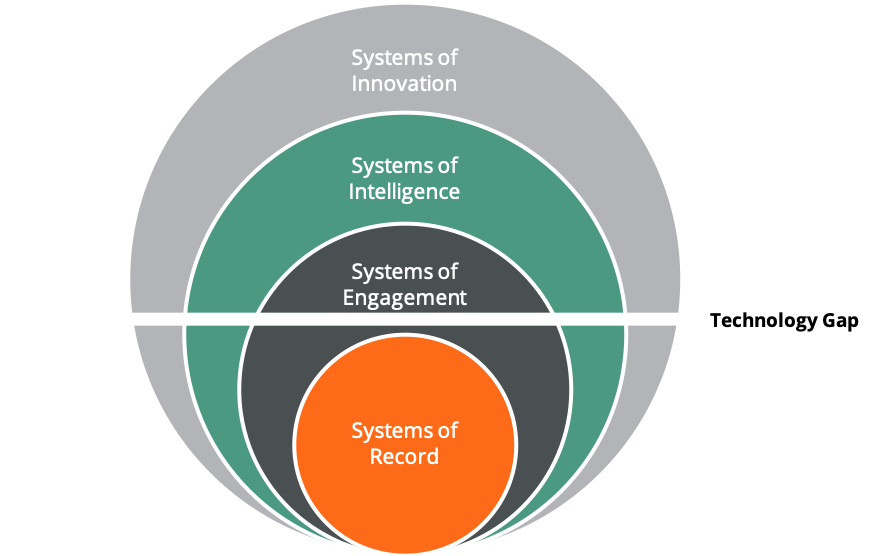
Found this helpful? Sign up for our newsletter to stay up to date – just complete the form below.
